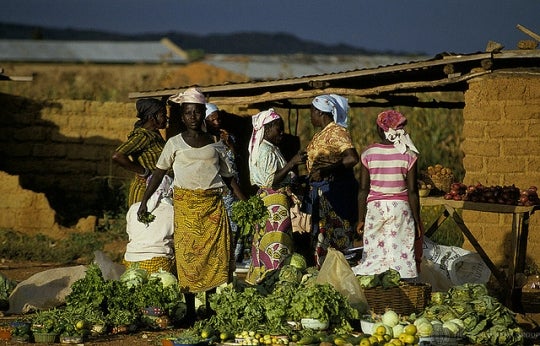 The halving of world oil prices over the last six months raises questions about the implications for food prices and the welfare of poor people.
The halving of world oil prices over the last six months raises questions about the implications for food prices and the welfare of poor people.
Do lower oil prices mean lower food prices? To a certain extent. But for low-energy cropping systems common in most developing countries, and in areas where food is not transported far, the impact will be dampened. For large oil exporters, however, food prices may increase. In general, lower oil prices should lower the cost of moving food from producers to consumers and reduce on-farm fuel and fertilizer costs. But a countervailing factor is that cheap oil may also induce people to drive more, and as fuel ethanol mandates link biofuel use to overall fuel use, ethanol use and the volume of maize used to produce it would also go up. In countries where oil is a large share of exports, real exchange rates may depreciate, which will disproportionately increase the price of traded goods like grains relative to other prices.
Is the downturn in agriculture commodity prices necessarily bad for farmers who produce food? A major downturn in commodity prices would not be great for farm incomes, and high crop yields would be needed to help dampen the effect on farm profits. Lower fertilizer and transport costs may help mitigate any negative impacts.
How long will oil prices remain low? While there is no certainty in forecasts, current estimates suggest fuel prices will remain low for 2015, increasingly slightly in 2016. There are three main drivers of the oil price decline which are structural: Significant increases in US shale oil production, receding concerns of oil supply disruptions in the Middle East, and a change in OPEC policy to maintain rather than cut production.
What can countries do? Raising agricultural productivity growth can offset the effects of lower food prices on farm profits. Oil exporting countries that import a higher share of their food consumption – think Venezuela, Yemen, Nigeria, and Azerbaijan -- face a potentially more challenging environment, particularly if they have not built up financial reserves during this period of higher oil prices. Investing to increase food supply in 2015 could help lower next season’s imports; targeted safety nets for the most vulnerable can help preserve purchasing power, and broader investments in agriculture could also help diversify future exports away from the dominance of oil. Keeping markets open can help reduce rapid price escalations. Recent concerns of possible curbs to wheat exports from Russia, the fourth largest exporter, led to a surge in world wheat prices even as oil prices tumbled.
Where do you think food prices are heading? We've had a couple of good grain harvests and grain stocks have grown bigger, but consumption continues to rise and this may increase with lower prices. We're just a bad crop away from difficult times and we should keep an eye on things like the continuing dryness in Brazil, whether agricultural finance will flow to Ukraine as much as is needed in the spring, and gauge potential impacts of the imminent export duty on wheat in Russia.
In summary, it's a complicated and volatile world and only continued and increased investment in agriculture and science is going to enable us to meet global, regional and national food security goals over the long term. A couple of good years of bountiful harvests do not lessen the challenge. This has been the warmest year on record, and the specter of climate change is forever with us.
Photo: Curt Carnemark / World Bank


Join the Conversation